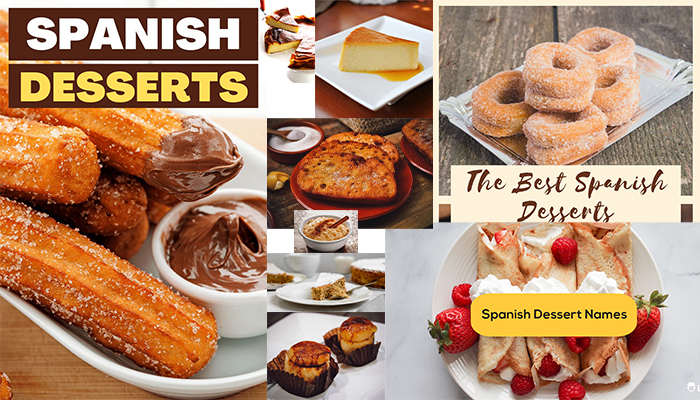Spanish Desserts , Open up your home kitchen to a world of sumptuous Mediterranean sweetness, and get inspired with these popular Spanish dessert recipes to wow friends and family at your next holiday or gathering.
Spanish cuisine has a big focus on simplicity when it comes to desserts. Many of the country’s classic desserts bring together simple ingredients to ignite big, rich, and delightful flavors.
From decadent pastries to creamy puddings, many of the desserts of Spain are simple to make, yet will keep you yearning for more with every mouthful.
So let us take you on a rich, creamy, and sweet culinary tour of Spain, and find out all about 14 of the country’s most beloved desserts, and how to make them at home.
………………………………………………………………………………………………………………………………………………………………………….
Torrijas ( Spanish sweets )
Torrija refers to the Spanish version of french toast. Unlike the American version that’s commonly regarded as a breakfast dish, torrijas are traditionally prepared for Lent and Holy Week as a dessert. They’re also popular in Portugal and Brazil where they’re known as rabanadas.
Torrijas are cooked differently from their American relatives, aside from the way they are consumed. Torrijas are created from crusty stale bread that has been steeped in spiced milk, wine, honey, or both. A pastry that is crisp on the outside and smooth and custardy on the inside is produced by dipping the bread in beaten egg and then frying it in olive oil until it is golden brown. It is comparable to a cross between bread pudding and french toast.
Torrijas are usually sprinkled with cinnamon sugar or drizzled with honey before serving. Though not traditional, this delicious Spanish dessert can also be enjoyed dipped in a hot chocolate sauce.
………………………………………………………………………………………………………………………………………………………………………….
Tarta de Santiago ( Spanish cake )
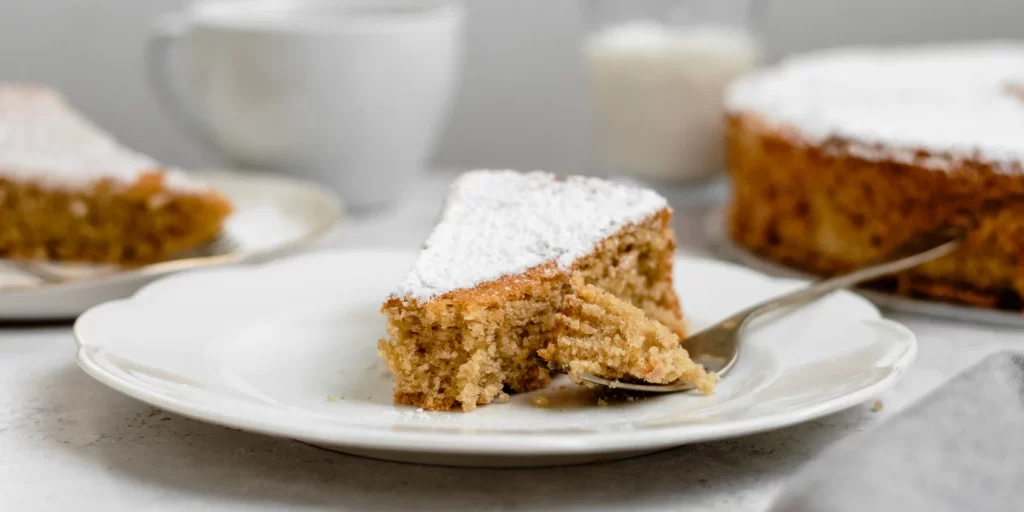
Tarta de Santiago is a classic Spanish dessert dating back all the way to the 15th century. It originated from Galicia, Spain, at the time of the medieval pilgrimage.
Made with almonds, orange zest, and almond zest, Tarta de Santiago is similar to Spanish almond cake.
It is equally soft and moist, and it is flavored with orange and almond. The cake’s center is adorned with a stencil of the St. James Cross, which is the single distinction. With a cup of cafe con leche, or coffee with milk, tarta de Santiago makes the ideal afternoon snack.
Originating from Galicia in North-Western Spain during the time of medieval pilgrimage, this tart is traditionally decorated with the St James cross. With its wonderfully moist almond and citrus flavours, this torte makes a perfect dessert or partner to an afternoon café con leche (milky coffee). This recipe was taken from World’s best cakes by Roger Pizey, published by Jacqui Small.
………………………………………………………………………………………………………………………………………………………………………….
Churros ( Spanish sweets )
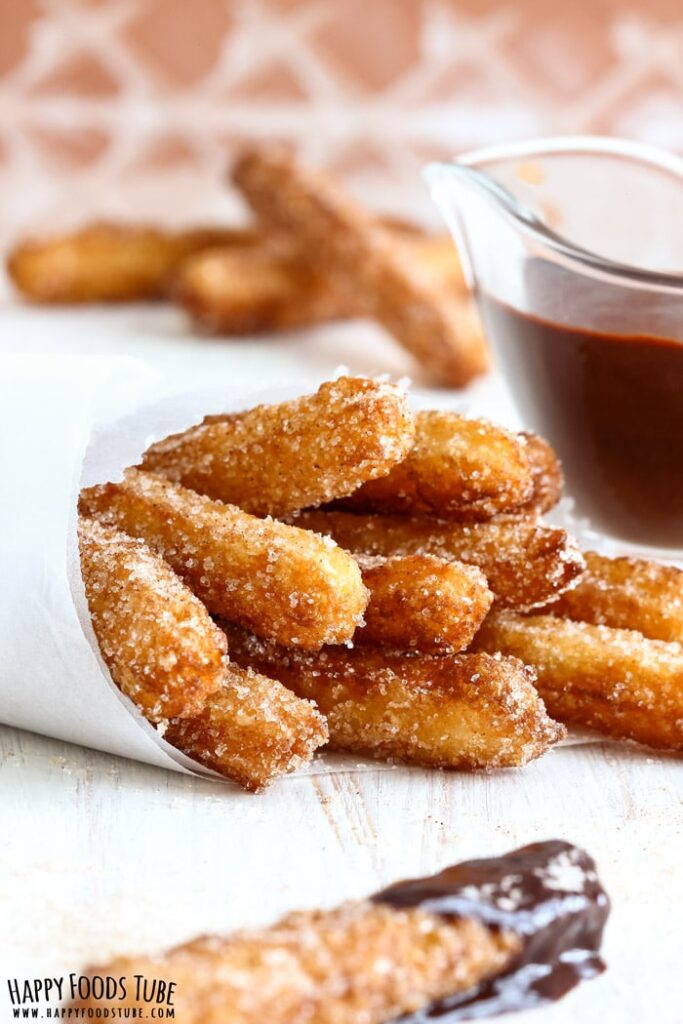
Churros instantly bring back fond childhood memories and nostalgia for so many Spaniards and Portuguese. These fried dough twists are a beloved sweet snack, ideal for all occasions.
Defined by their ridged, winding shape, churros are commonly eaten at breakfast. Spaniards love to dip them in hot chocolate, dulce de leche, or other sweet, delicious treats.
Just watch your kids’, friends’, or partners’ eyes light up when you serve them these rich, fried treats with a side of thick hot chocolate!
………………………………………………………………………………………………………………………………………………………………………….
Flan ( Spanish cake )
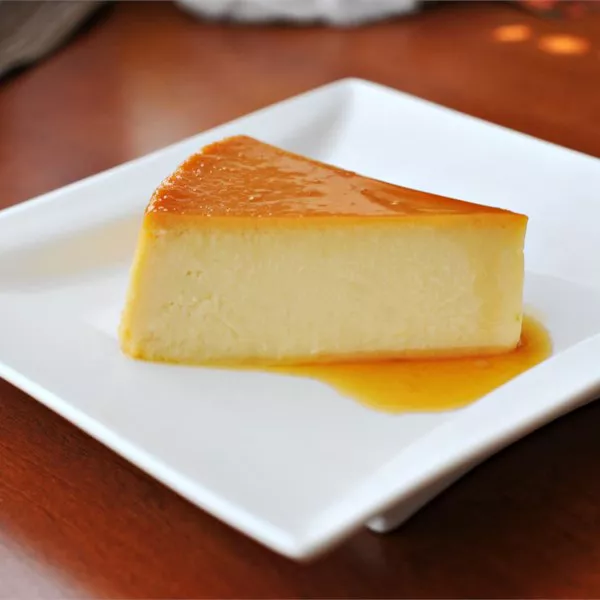
What Is Flan?
“Flan” can refer to a couple different things depending on where you live. In this case, it’s a baked custard dessert topped with caramel. The Spanish dessert is similar to the French crème caramel.
Just the mere sight of the smooth, glistening yellow edge, curving up to a flat rich, golden top, is enough to get the mouth salivating, and many Spaniards will agree.
Spanish flan is a dessert that has stood the test of time. Wonderfully simple, each slice treats you to a light, egg custard texture, as a thick caramel sauce oozes from within and spreads sweetness across the tongue.
Flan is a Spanish dessert that takes delight in bringing out your inner gluttony and never letting go. It has a custard or jelly-like consistency and a rich, sweet flavor with hints of vanilla.
………………………………………………………………………………………………………………………………………………………………………….
Tarta de Queso ( Spanish cheesecake )
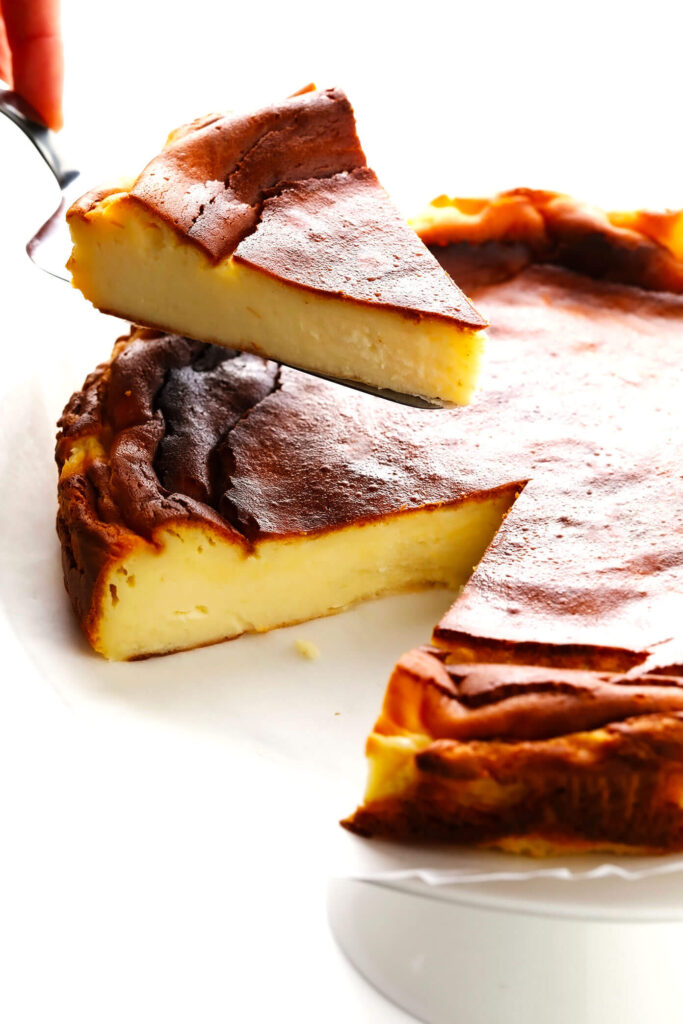
One for dessert lovers who yearn for savory, mature flavors, Basque cheesecake is beautiful to lay eyes on and is magnificently airy, creamy, and heavenly.
Also known as ‘burnt’ Basque cheesecake, tarta de queso is relatively new to Spanish cuisine. It was developed in the early 1990s, inspired by American cheesecake recipes.
Beyond the crust’s dark brown ridges and caramelized, cracked surface, you’ll find a creamy, melt-in-your-mouth filling that perfectly balances the crust’s “burnt” feel.
Basque cheesecake is so simple to make. Traditionally, it was made from a mixture of eggs, flour, heavy cream, sugar, and cream cheese.
Through the years, various ingredients have been added to enhance the flavor profile. From vanilla to lemon, there are so many ways to create this beloved cheesecake to suit both sweet and savory palates, depending on your guests.
Barclay and I finally got to try the real-deal, original, famous tarta de queso that inspired them all last year during a weekend getaway to San Sebastián. We arrived in the city with a deliciously long list of recommended places to sample the various pintxos, txuletas, anchovies, cheeses, and wines for which this gastronomic capital of the world has become so famous. But when it came to recommendations for where to try the Basque country’s iconic cheesecake, everyone agreed there was one spot we absolutely had to go — La Viña.
This cozy local restaurant is credited with inventing Basque cheesecake back in the 90s, when chef-owner Santiago Rivera was looking for a new dessert to put on the menu. By contrast to American-style cheesecakes that tend to be dense, firm, evenly-baked with (hopefully) zero cracks, and made with some type of cookie crust, Chef Rivera tweaked all of the proportions to create his own new style of Basque cheesecake that is uniquely airy and creamy, baked crustless in crisp parchment paper, rippling around the edges with beautiful cracks, and — famously — made with a deliciously “burnt” (more like caramelized) exterior.
………………………………………………………………………………………………………………………………………………………………………….
Ensaimadas ( Spanish sweets )
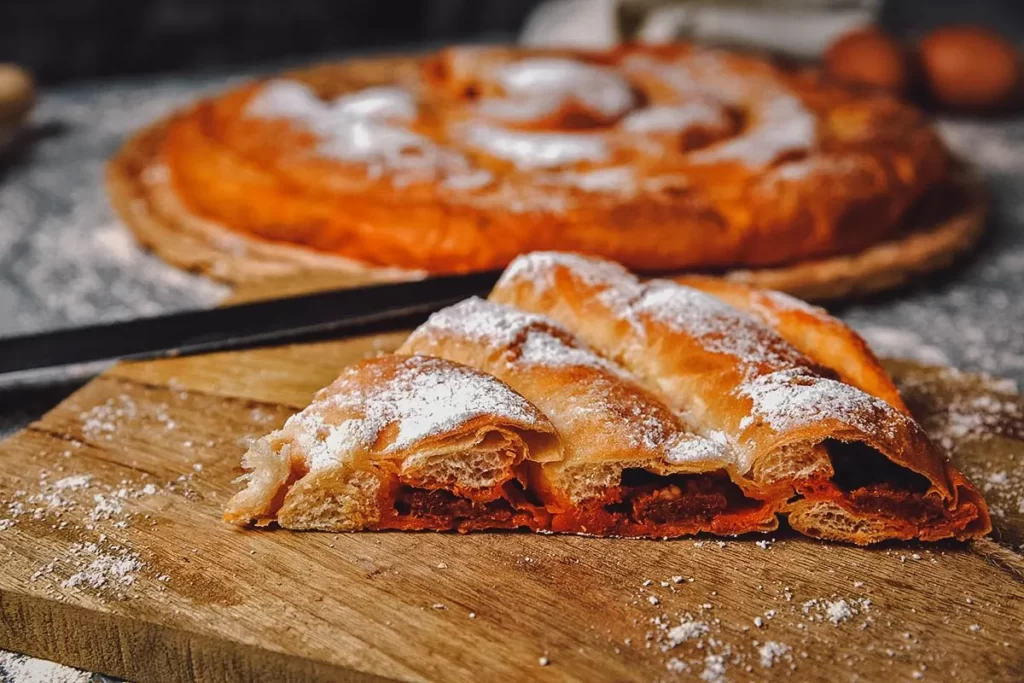
Ensaimadas are among my favorite Spanish desserts. They’re extremely popular in the Philippines where they’re made with butter but in Spain, they’re made with a type of reduced pork lard called saïm.
Traditional Spanish dessert called ensaimada hails from Mallorca. They are currently available all year round and are typically eaten for breakfast or as a snack in the afternoon. Traditionally, they were created as a type of sweet bread during Easter.
Ensaimadas are formed into a coil and sprinkled generously with powdered sugar on top. Classic versions are served plain but they can be filled with different ingredients like pastry cream, pumpkin jam, chocolate, or turrón paste (nougat).
………………………………………………………………………………………………………………………………………………………………………….
Arroz con Leche ( traditional Spanish desserts )
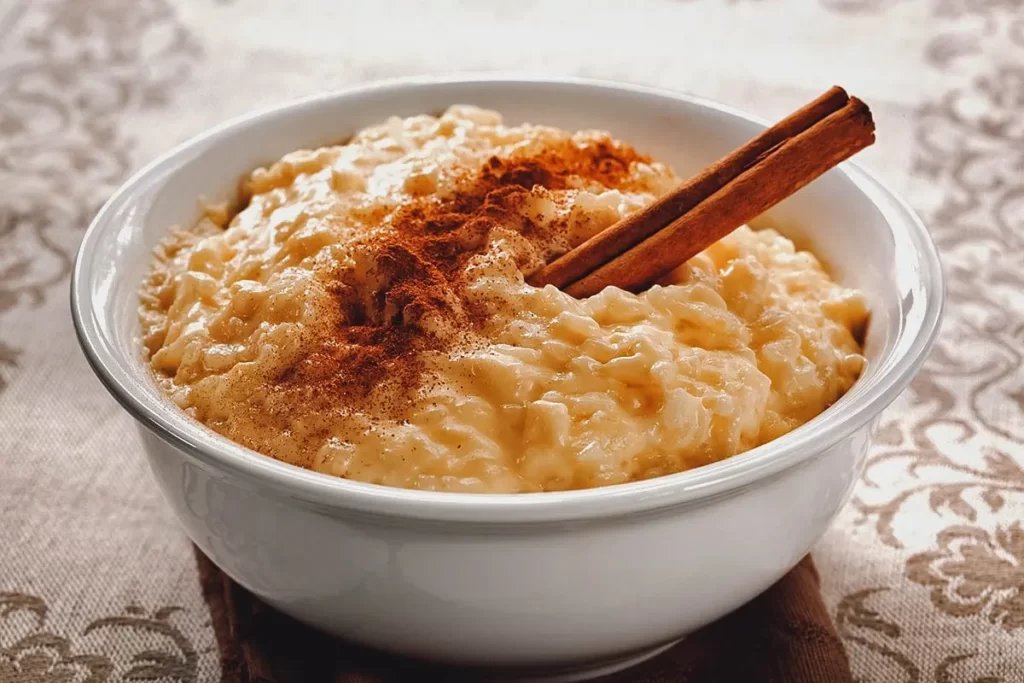
Arroz con leche is a comforting dish and one of the most well-known traditional Spanish desserts. It literally means “rice with milk” and refers to a thick Spanish rice pudding that dates back to the Moorish period in Spain.
Spanish rice pudding can be made in a variety of ways, but the standard ingredients are cooked rice, milk, cinnamon sticks, sugar, and either orange or lemon peel. Arroz with leche is a common Spanish dessert offered in a lot of homes all across Spain. It is delicious warm or cold.
………………………………………………………………………………………………………………………………………………………………………….
Pastissets
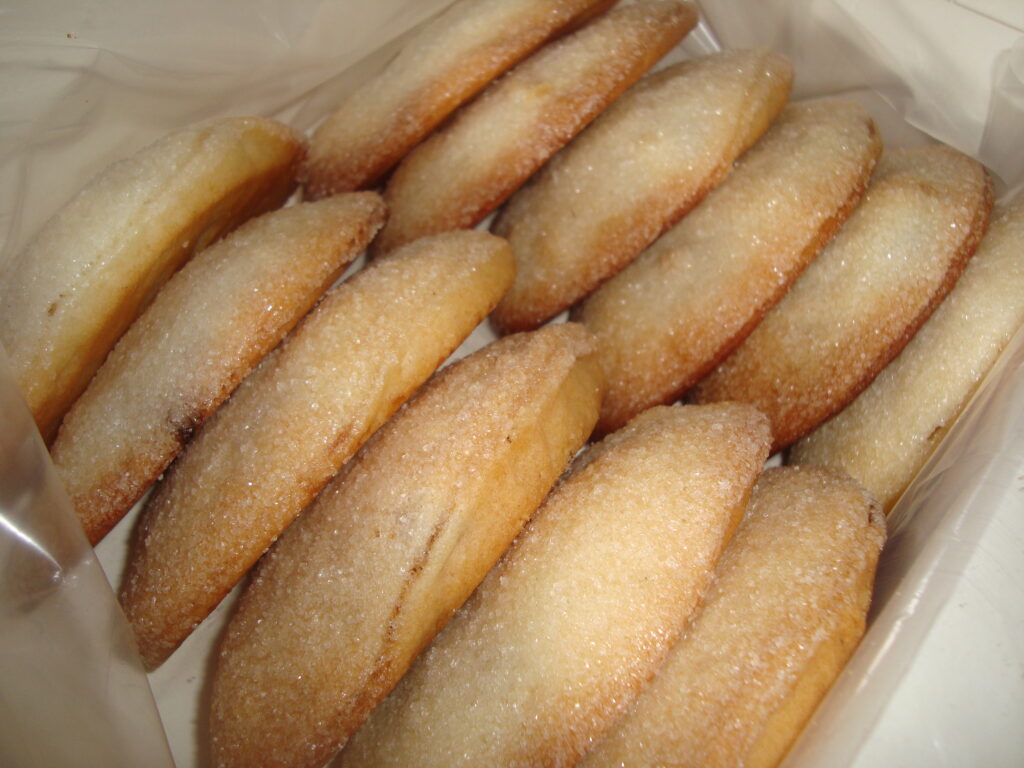
“A delicate cookie from the Catalunya and Baleares Region of Spain. From Penelope Casa’s book “Delicioso!” She recommends using lard for authenticity and best flavor.”
Pastissets are powdered sugar cookies made with flour, butter, egg yolks, lard, sugar, cinnamon, and lemon peel.
The dough is formed into various shapes and dusted with powdered sugar after baking.
These cookies may look simple, but they’re truly extraordinary. They’re wonderfully sweet, zesty, and buttery!
What makes them extra special, though, is their consistency. They’re so ridiculously soft and tender, they melt in your mouth!
………………………………………………………………………………………………………………………………………………………………………….
Buñuelos de Viento ( traditional Spanish desserts )
Buñuelos de viento are light and airy Spanish fritters (viento means “wind”). They’re a popular Spanish dessert traditionally eaten around Christmas time and other holidays like Easter and All Saints’ Day.
Although compared to doughnuts, buuelos really have a texture more akin to choux pastry. They are much lighter than doughnuts and made with a lightly cooked dough that has been enhanced with lemon zest. They can be served plain or filled with other things including pastry cream, custard cream, and marmalade.
Buñuelos de viento are commonly eaten for breakfast, for dessert, or as an afternoon snack, often with coffee or hot chocolate. They’re typically served with a generous dusting of powdered sugar though some people like to have them with other sweet flavorings like chocolate sauce and dulce de leche.
………………………………………………………………………………………………………………………………………………………………………….
Pionono ( Spanish cake )
Piononos are small Spanish pastries traditionally associated with Santa Fe, a small town adjacent to Granada. This delicious dessert consists of two parts – a bottom layer of rolled sponge cake drenched in syrup and a crown of toasted pastry cream. It’s soft and spongey and typically consumed in one or two bites.
Pionono is originally from southern Spain but it’s become popular in former Spanish colonies like the Philippines, Argentina, Venezuela, Colombia, Peru, and Cuba. In Latin America, it’s typically made with dulce de leche and can even be prepared in savory versions.
………………………………………………………………………………………………………………………………………………………………………….
Knowledge World Blog- WWW.KNOWLEDGEWORLD.BLOG
Visit Our Online Shop Website- WWW.CEYLEBRITY.COM
Ceylebrity Sinhala News- WWW.CEYLEBRITYNEWS.LK
Share
